As a home educating mom, one of my primary goals is to introduce my children to rich, quality literature and watch the world come alive as we read together. Living books transport children to other times in history, help them see the world from different perspectives, inspire them to be the hero of the story, and more. The heart of Treehouse Book Studies is to bring literature to life with family and community, and let literature be the launching point of discovery, wonder, friendship, inspiration, and a rich education.
In this blog post I am sharing all about Treehouse Book Studies, including what they are and ways to use them in your homeschool.
In this blog post:
- What are Treehouse Book Studies?
- Creative learning sheets in Treehouse Book Studies
- Options for using Treehouse Book Studies
- Peek inside Treehouse Book Studies [Free download]
- Treehouse Book Studies collections
- Treehouse Book Studies community photos
What are Treehouse Book Studies?
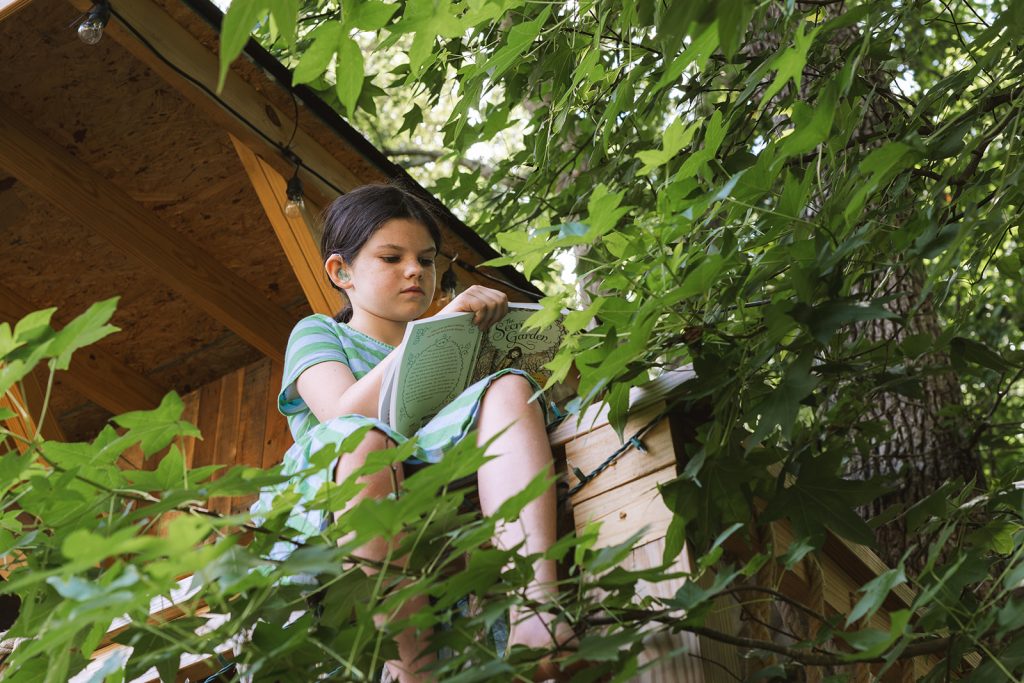
Treehouse Book Studies are digital download book studies of children’s literature for ages 5-13. Read favorite chapter books in your home such as Charlotte’s Web, The Secret Garden, Island of the Blue Dolphins and more with these thoughtful, creative guides. Treehouse Book Studies were designed to be used in your homeschool as literature curriculum, a launching pad for many subjects, or as a launching point for a book club with a small group. They work great for reading aloud with your children or for older children, you could create reading and writing assignments from the studies.
Treehouse Book Studies are suitable for family-style learning, but are also divided into Primary, for kindergarten through 3rd grade, and Intermediate, for grades 4th through 8th grade, to help you select titles that will be most suited to the ages of children in your home.
As you read rich stories together with Treehouse Book Studies, your family will create lasting connections while you study themes such as science, nature, geography, history, and language arts. Each download includes:
- Weekly lesson plans including a reading plan, discussion questions, links to learning videos, notebooking prompts, projects, crafts, recipes and more.
- Book Report Template
- Extension Picture Book List to dive deeper into the themes presented in the story
- Book Club Meet-up Guide- ideas to gather with a group
Each book study offers a four-week study for in-home use and a Book Club Meet-Up Guide. Each week children will compile unfamiliar words in an Illustrated Dictionary, complete a robust Book Report to record their favorite characters, write a book review, copy favorite quotes, and more. There are opportunities for copywork, author study, exploring writing styles, and completing individual creative writing. They will explore themes in history, geography, science, and nature as they read the stories and awaken curiosity and wonder. Children will have opportunities to research various themes throughout the story, notebook, bake, and do projects to bring the story to life. The lesson plans are intended to be used as a menu – pick and choose which lessons and activities to complete each day and fill them in on the provided blank grid or in your homeschool planner.
Each book study includes four Weekly Lesson Grids. The Weekly Lesson Grid is designed to be used as a menu for how to study the assigned reading each week. Each grid includes sections for reading, discussion, further learning, exploration, and making. All activities are based on the book content and the week’s reading, so children are able to use the story as a foundation for additional learning themes.
Creative learning opportunities in Treehouse Book Studies

Treehouse Book Studies include a variety of learning activities for children, including notebooking and narration ideas, Book Report templates, and Illustrated Dictionary templates to learn new words as you read together. These studies also include lists for further reading, recipes, hands-on activities, and more.
Here are some components of Treehouse Book Studies that can be adapted for every age.
Notebooking and narration ideas in Treehouse Book Studies

Each week’s lesson plans and discussion guides in Treehouse Book Studies are excellent prompts for notebooking and narration. It is a simple and effective way to comprehend and engage with literature and the themes they are learning about through the story as you read and research together.
In a sketchbook or on blank paper or card stock, help children complete written narrations of what they are learning. This simply means writing sentences or paragraphs summarizing their discoveries. Use this opportunity to work on composition skills, spelling, grammar, handwriting, or typing. Then, they can complete drawings inspired by the story and their research.
Here are some options for practicing narration and notebooking with different ages:
- Primary – Have the child tell you one or more sentences to summarize what they have learned. Write what your child says in their notebook page. Have your child complete a drawing to represent their writing.
- Intermediate – Have the child tell you a summary of what they have learned. Work together to form the information into one or more paragraphs. Write what your child says on a separate piece of lined paper, and have your child copy what you wrote into their notebook. Have your child complete a drawing to represent their writing.
- Advanced – Independently, have the child research and write or type sentences or paragraphs to summarize what they have learned. Encourage excellent composition, handwriting, grammar, sentence structure, and spelling. Have your child complete a drawing to represent their writing.
Book Report Booklet [Includes template]
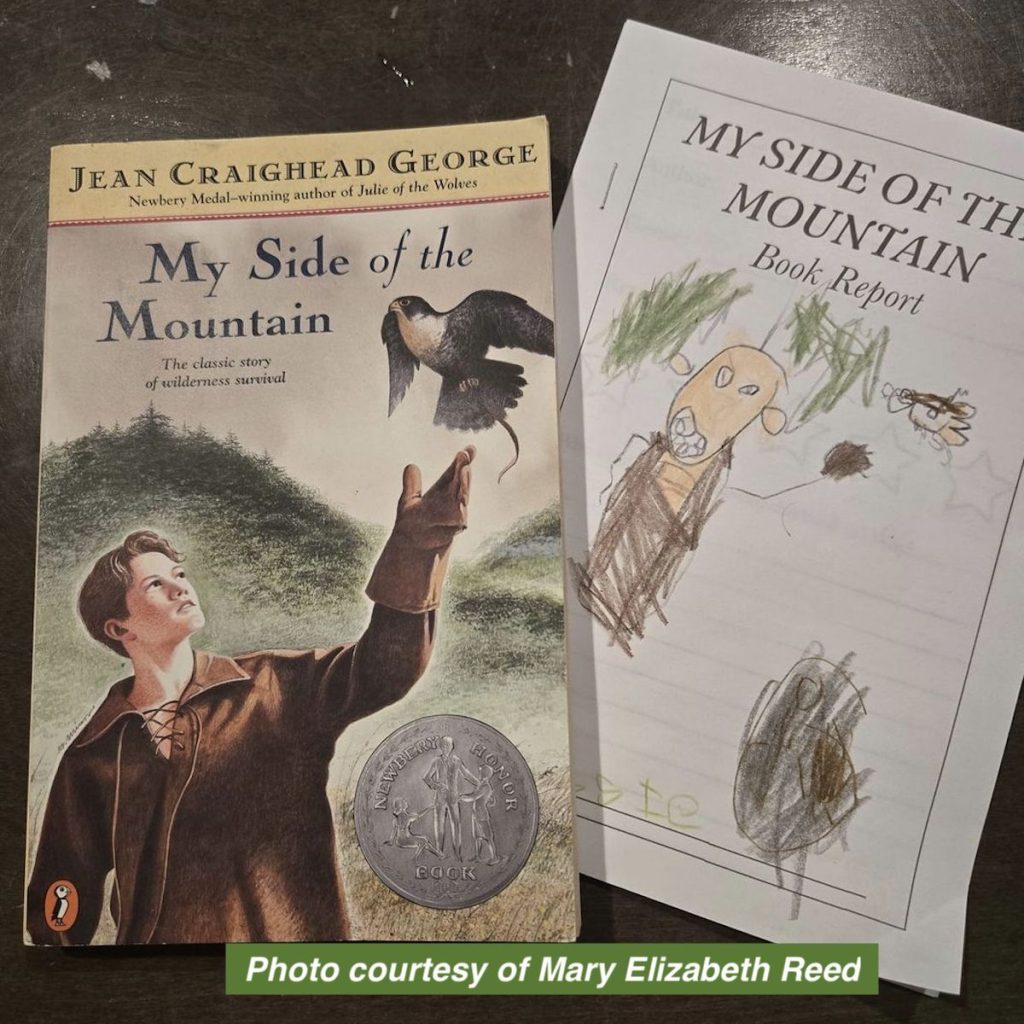
As you and your children read together, your children will fill out portions of the Book Report Booklet, which is included in the digital download. This is a keepsake that will help them record and recall their favorite characters, favorite parts of the story, and their overall review of the book. They will also copy favorite quotes, explain the moral of the story, and complete a written summary of the book. You can keep this as a record of studying the book, or use it as a launching point for your child to present what they have learned to your family or to a community book club.
Illustrated Dictionary [Includes template]

Master new words and vocabulary as you read together. As you come across unfamiliar words in the story, have the children create an entry in the Illustrated Dictionary, which is included in the digital download. They will write the unfamiliar word, look it up in a dictionary, write the definition, and write it in a complete sentence. Talk about the word’s meaning and context in the story. Then, they can illustrate the word or sentence.
Extension Book Lists
Treehouse Book Studies include extension book lists for further reading on the themes you explore through literature. Gather a deeper understanding of book themes you encounter like historical events, historical time periods, animals, science topics, and more. Pick and choose the subjects that interest your children, or coordinate these themes with other areas in your homeschool studies for a well-rounded study.
Multimedia Reference Materials links
Treehouse Book Studies feature multimedia reference for areas of further study. Learn more about topics through a curated list of multimedia links that coordinate with your study for further learning.
Hands-on projects and activities
Bring reading to life with the hands-on activities embedded in every study. Each study includes two recipes that are inspired by the book, and each weekly lesson plan includes ideas for hands-on activities for kids. Projects may feature outdoor activities, games, science experiments, crafts, acting out a scene from the book, and more.
Options for Using Treehouse Book Studies
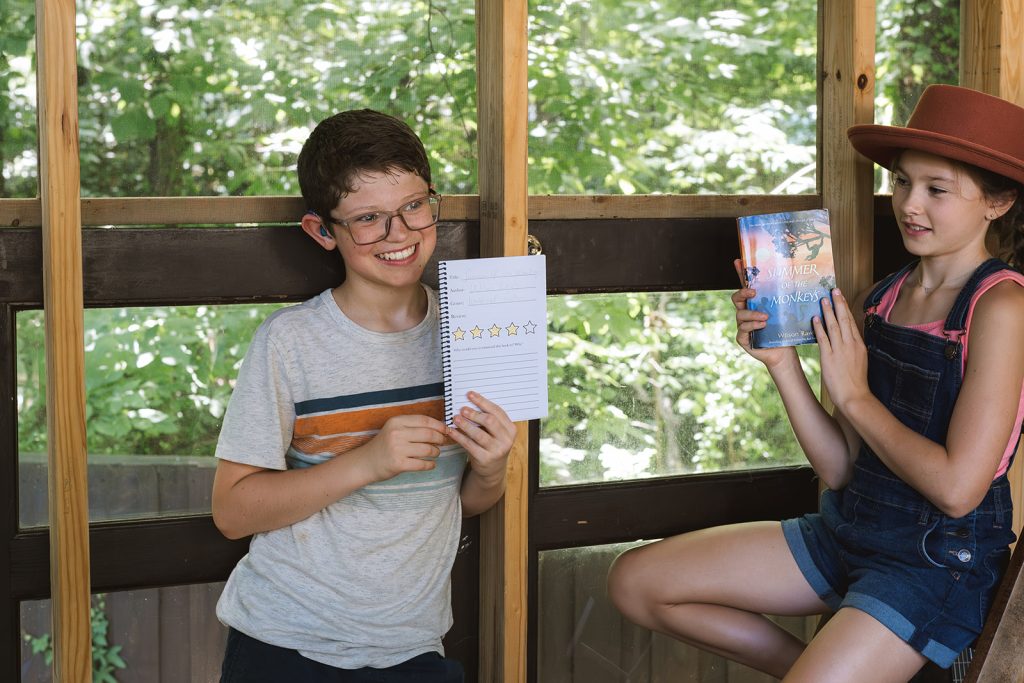
Treehouse Book Studies are designed as a guide to best suit your family’s desires, interests, and needs as you explore great literature together. Here are some ways you could integrate Treehouse Book Studies into your homeschool:
- Literature-based core curriculum: Use the study as your core curriculum by adding a leveled math and language arts curriculum (if desired). Read the assigned chapters aloud. Complete most or all activities, and do an in-depth study of themes in the book that specifically interest your children using additional resources like books, videos, research, and notebooking.
- Supplemental curriculum: Read the assigned chapters aloud or have older children read independently. Use the lesson guide as a menu to select one lesson or activity each day or week to complete.
- Weekly or monthly community book club: Read the book with your family and gather with other families using Treehouse Book Studies after completing the book. Use the discussion questions to guide the conversation, choose activities and lessons to do as a group, and practice presentation skills to share notebook pages and book reports. Each book study includes specific ideas for a Book Club Meet-Up.
How to use Treehouse Book Studies with friends or a co-op
Treehouse Book Studies are an excellent way for friends or a co-op group to explore literature together. Participants do sections independently such as the assigned reading, Illustrated Dictionary, and Book Report Booklet, and come together for discussion and selected projects from the reading. Groups could come together weekly or monthly after the book is completed. Refer to the Book Club Meet-Up Guide for ideas.
Tips for using Treehouse Book Studies with younger children

Read-alouds are a wonderful addition to a family rhythm. Inviting younger children into stories can be a wonderful opportunity for whole-family learning. Most discussion questions, lessons, projects, and activities can easily be adapted for younger learners with slight variations. Some ideas include:
- Print coloring pages to correlate with themes your older children are learning through the story.
- Invite young children to draw or trace pictures in their notebook. Have them narrate what they are learning and write down what they say. Instruct them to copy it if they are able.
- Lean into the Make section of the lesson plan to include them in the baking and crafting activities.
Peek inside Treehouse Book Studies [Free download]

See a sample lesson plan from The Sign of the Beaver Book Study here.
Treehouse Book Studies collections
Treehouse Book Studies are available for purchase individually, or through collections. Below includes the Primary Collection and Intermediate Collections 1 and 2. These are great options for your literature curriculum or to supplement your existing homeschool curriculum. Titles that are not yet available will be released during the 2025-26 school year.

Recommended for children in kindergarten through 3rd grade, this curated collection features nine classic children’s books with lesson plans for an entire school year’s worth of learning. Preorder the entire collection now and the files will be added to your account on the release dates below. The Primary Collection 1 features:
- Charlotte’s Web by E.B. White (Aug. 1)
- My Father’s Dragon by Ruth Stiles Gannett (Aug. 1)
- The Trumpet of the Swan by E. B. White (Aug. 1)
- In Grandma’s Attic by Arleta Richardson (Nov. 1)
- Winnie the Pooh by AA Milne (Jan. 1)
- Little House in the Big Woods by Laura Ingalls Wilder (Feb. 1)
- The Enormous Egg by Oliver Butterworth (March 1)
- Sarah Whitcher’s Story by Elizabeth Yates (April 1)
- The Story of Doctor Dolittle by Hugh Lofting (May 1)
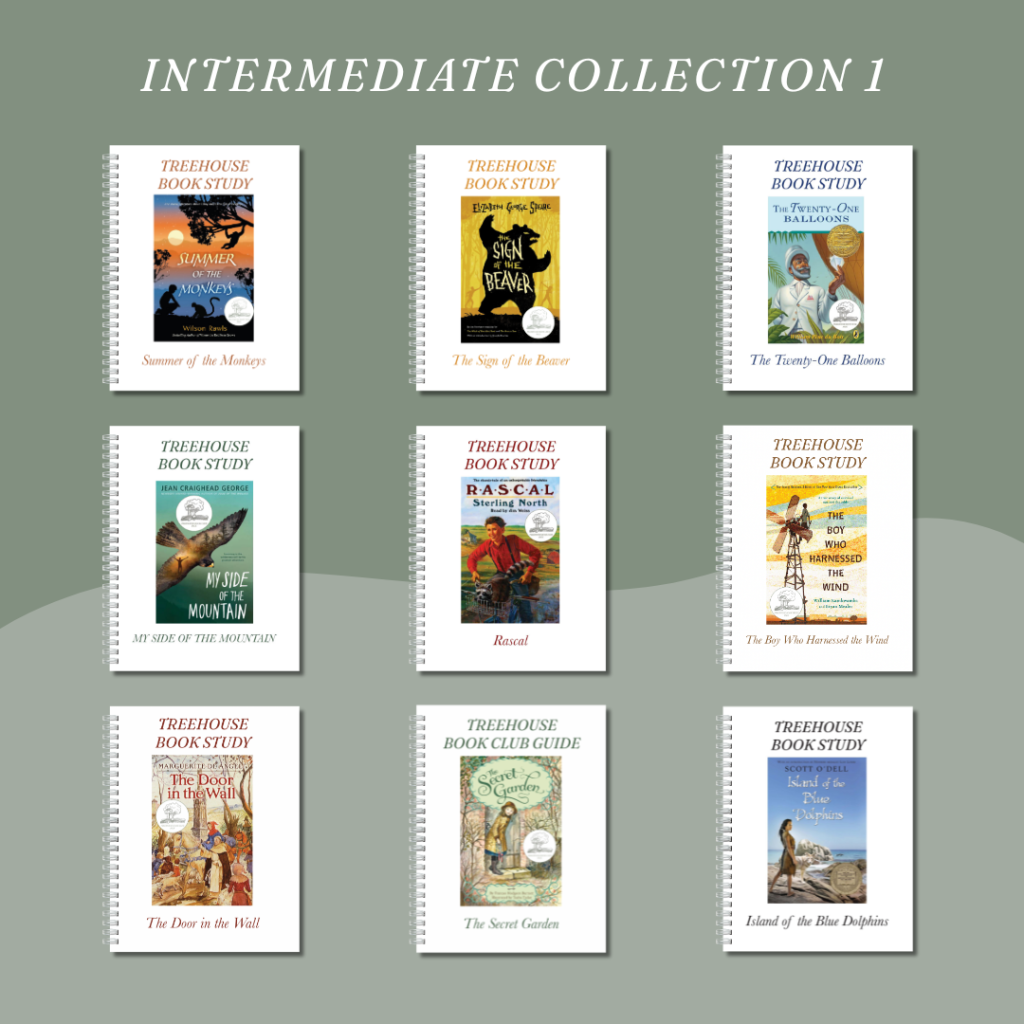
Recommended for 4th through 8th grade students, this curated collection features nine classic children’s books with lesson plans for an entire school year’s worth of learning. The Intermediate Collection 1 features:
- Summer of the Monkeys by Wilson Rawls
- The Sign of the Beaver by Elizabeth George Speare
- The 21 Balloons by William Pène du Bois
- My Side of the Mountain by Jean Craighead George
- Rascal by Sterling North
- The Boy Who Harnessed the Wind by William Kamkwamba
- The Door in the Wall by Marguerite de Angeli
- The Secret Garden by Frances Hodgson Burnett
- Island of the Blue Dolphins by Scott O’Dell

Recommended for 4th through 8th grade students, this curated collection features nine classic children’s books with lesson plans for an entire school year’s worth of learning. Preorder the entire collection now and the files will be added to your account on the release dates below. The Intermediate Collection 2 features:
- Caddie Woodlawn by Carol Ryrie Brink (Aug. 1)
- Thunder From the Sea by Joan Hiatt Harlow (Sept. 1)
- Adventures with Waffles by Maria Parr (Oct. 1)
- Across Five Aprils by Irene Hunt (Nov. 1)
- The Lion, the Witch, and the Wardrobe by C.S. Lewis (Jan. 1)
- The Miracles on Maple Hill by Virginia Sorensen (Feb. 1)
- The Wild Robot by Peter Brown (March 1)
- Fever 1793 by Laurie Halse Anderson (April 1)
- Where the Red Fern Grows by Wilson Rawls (May 1)
Treehouse Book Studies community photos
Curious how families have used Treehouse Book Studies in their homeschool or community? See all of the fun below.


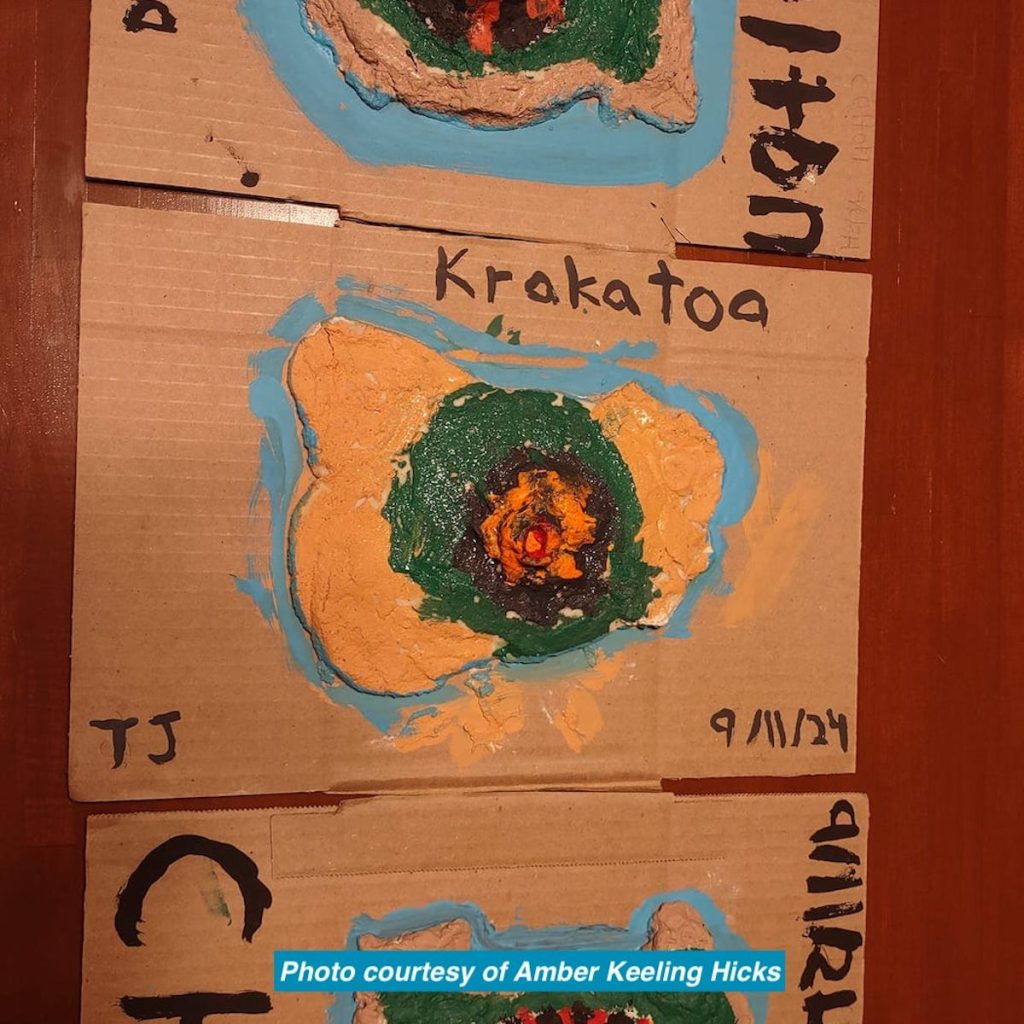







Will you use Treehouse Book Studies in your homeschool? Share your plans in the comments below.



![Winter Solstice Activity for Kids [Free Worksheet PDF]](https://storage.googleapis.com/treehouse-schoolhouse-media-dev/fe547f4b-gn4a7877-scaled.jpg)